The 800 sample is referred to as "precious metal table", its composition differs from the higher labels.
Products made of this material are created by stamping or artistic casting. They are distinguished from everyday tableware by their antibacterial properties, prestige, high cost.
800 proof silver what is it, what is the metal
800 silver standard It is considered a low-grade alloy that is used mainly for casting cutlery. The "800" mark on the metal indicates that the item contains 80% of pure silver, with the remainder accounted for by various impurities.
Alloy corresponds to 19 carats, 12.8 lots or 77 gold pieces.
It is often referred to as the "dining room" and peaked in popularity during the reign of Catherine II.
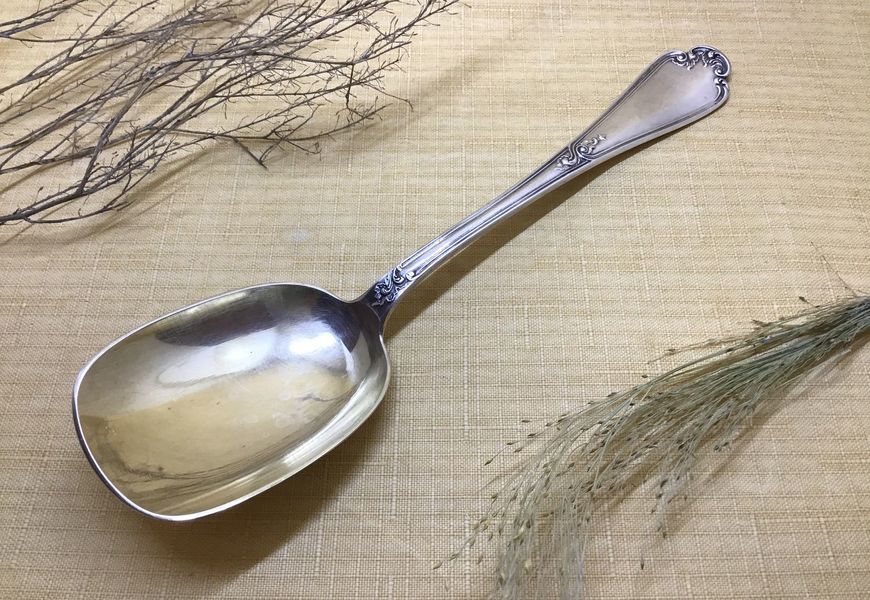
800 Silver: Composition and properties
In its purest form, the lunar metal is not used to create jewelry because it does not have sufficient strength. The metal is alloyed with various additives in order to change its foundry properties, increase its performance characteristics, and increase its hardness.
For 800-grade silver, the main alloying agent is copper. Sometimes the alloy also contains zinc, aluminum, and rarely nickel. The amount of moon metal in one kilogram of such an alloy is 800 grams, and 200 grams are accounted for by additives.
Due to the higher copper content, the alloy may have a yellowish tint, atypical of higher samples. Copper also contributes to reduced corrosion properties, and the product quickly darkens from air and water environments.
Interestingly, the "800" marking is set only for silver alloys. The only country where the 800 gold standardis Portugal.
Livability
Despite the high content of additives, the precious metal does not lose its malleability. Silver 800 proof retains the ability to any jewelry processing: rolling, stamping, forging without destroying the structure.
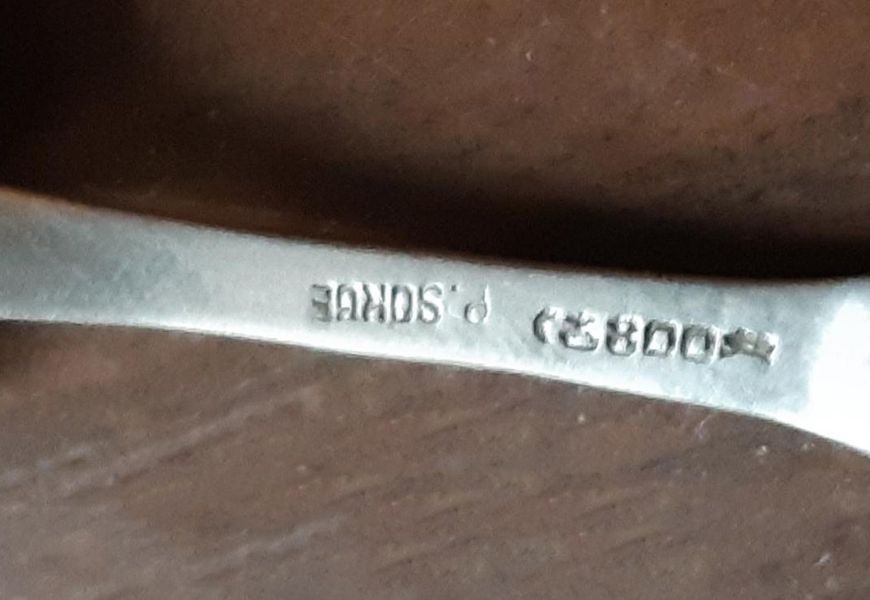
Silver material is quite malleable, has a melting point of 780 оС.
Durability
This indicator is a huge advantage of 800 alloy. The items made of this material are capable of withstanding daily intensive stresses.
It is copper that gives the lunar metal an additional resource of strength, although it reduces its inertness.
Wearability
The alloy is used to create cutlery, writing implements, and inexpensive jewelry. All products are highly wear-resistant, not prone to scratches, scuffs, and other defects that inevitably appear over time on items made of higher precious metal samples.
Why does silver need impurities?
With impurities precious metal are brought up to a certain grade. Additives can change the final color of the material as well as give it a number of useful properties:
- Improved casting characteristics;
- Decreasing melting point;
- Increased hardness;
Pure silver is not used in jewellerybut is used to cast bank ingots.
Pros and cons of the alloy
Sample 800: narrow use and widespread use
The applications of 800 proof do not expand over time. The alloy is used to create products that must be durable because they will be subjected to daily physical abuse.
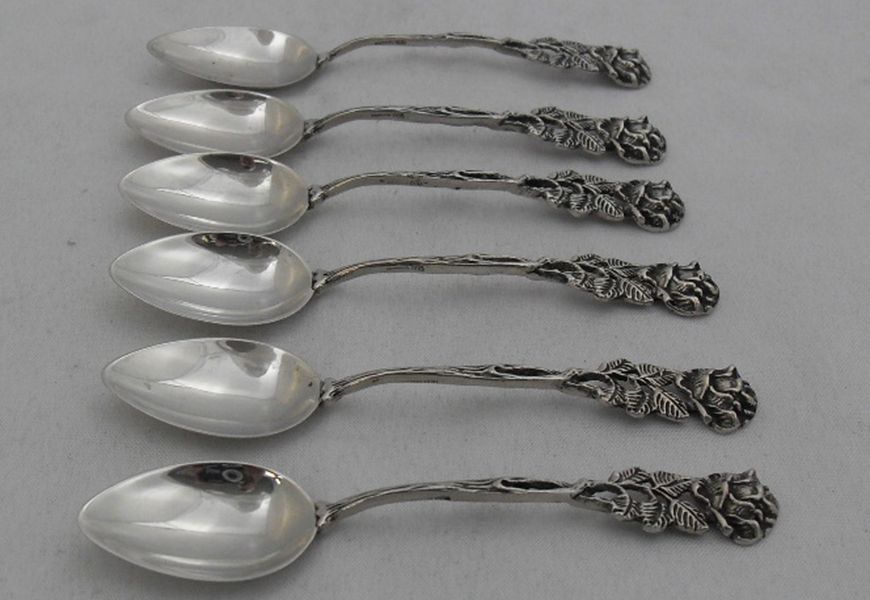
Making silverware
The most common use of the precious metal is for a variety of tableware.
The usefulness of silverware has been known since the dawn of civilization. In times of military campaigns, water was transported inside silver vessels, which helped keep it fresh. Ancient healers used silver plates to treat burns, wounds and bruises.
The bactericidal properties of the moon metal destroy over 350 different types of microbes. Silver ions have antiviral, disinfectant, and antifungal effects.
800 proof is used to create forks, knives, spoons, cups, plates, vases, pitchers, coffee pots, straws, and shot glasses. Famous jewelry factories use this material to create gift sets that can be used by generations of families.
Application as spraying
Silver plating is often used to coat costume jewelry. Silver plating is usually done by electroplating, which gives the objects the decorative and protective properties of the moon metal.
Applications 800 sample as a sputtering improves the reflectivity, thermal conductivity, appearance of any product.
It is worth bearing in mind that if the object has been silvered, it does not have a precious metal assay.
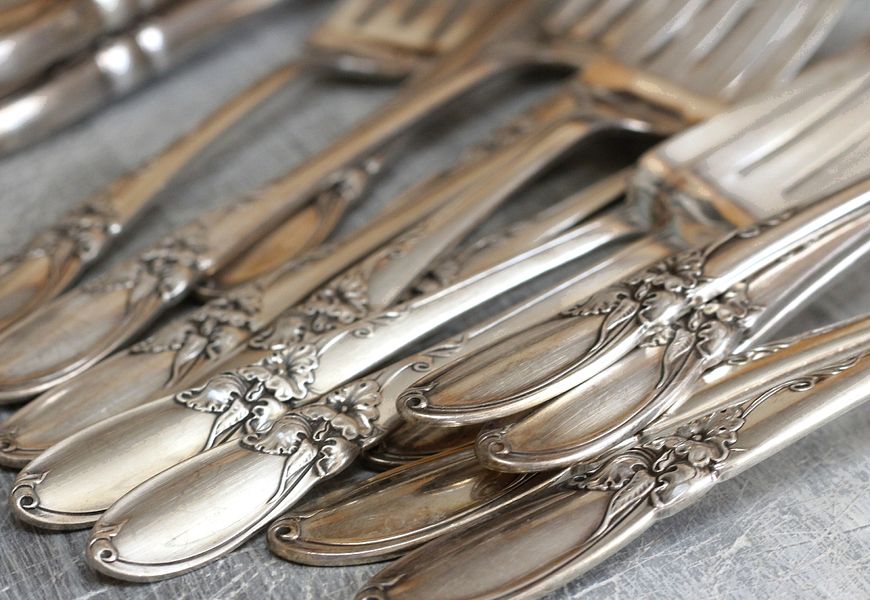
Use for various accessories
The material can be used to create handles, decorative elements, sword handles, cufflinks, cigarette cases.
Production of cheap souvenirs
The alloy is actively used to create a variety of souvenir products. On the showcases of jewelry stores you can see gift figurines, commemorative medals, home amulets, made of this metal.
History of the stigma on Russian silver
Before the appearance of assay control in 1700, only silver items on the territory of Tsarist Russia were stamped. There was no unified standard, craftsmen and large jewelry factories marked their products with their own mark. The branding indicated only that the item was made of lunar metal.
The assay system laid down by Peter the Great remained virtually unchanged until 1917. According to Peter's decree, four gold and four silver proofs were established. The decree protected the interests of bona fide producers, fair competition, and the state itself.
The tsarist branding looked as follows: first the numerical value of the assay in the ash system was indicated, then the imprint of the female profile in the kokoshnik, and last the initials of the master or the manager of the factory were indicated. Often the year of manufacture was also indicated on the item.
The silver assay system changed when the Bolsheviks came to power. The spool system was replaced by the metric system, and the woman's head was replaced by the worker's head. The stamping system was revised again in 1958, and did not change again until the collapse of the Soviet Union.
The branding on the USSR-era lunar metal looked as follows:
- Cipher of the assay office;
- A star with a crossed hammer and sickle inside;
- The numerical value of the sample;
The modern version of the silver marking differs from the Soviet one in that the hammer and sickle have been replaced by a woman's head again, and all information about the item is inscribed inside a figure shaped like a barrel.
Labeling in other countries
The earlier start of hallmarking is typical of European countries. Many of them show their grades in carats. Lot or spool designation system The purity of the alloy is almost nowhere to be found.
English
In the second half of the 12th century, many craftsmen in England had individual stamps. They could indicate them on the finished product only after verification by the Guild of Jewelers.
In 1701, assay offices were opened throughout the country, which facilitated quality control of jewelry. The stamp of those times looked like this:
- The image of a walking lion is the sign of a government agency;
- Image denoting the year of issue;
- An image unique to each individual city;
- A stamp indicating the payment of taxes;
- Sample;
There is no tax stigma on modern English products.
French
The oldest mark found on a French ornament dates back to 1272. It tells the name of the craftsman and the city of production.
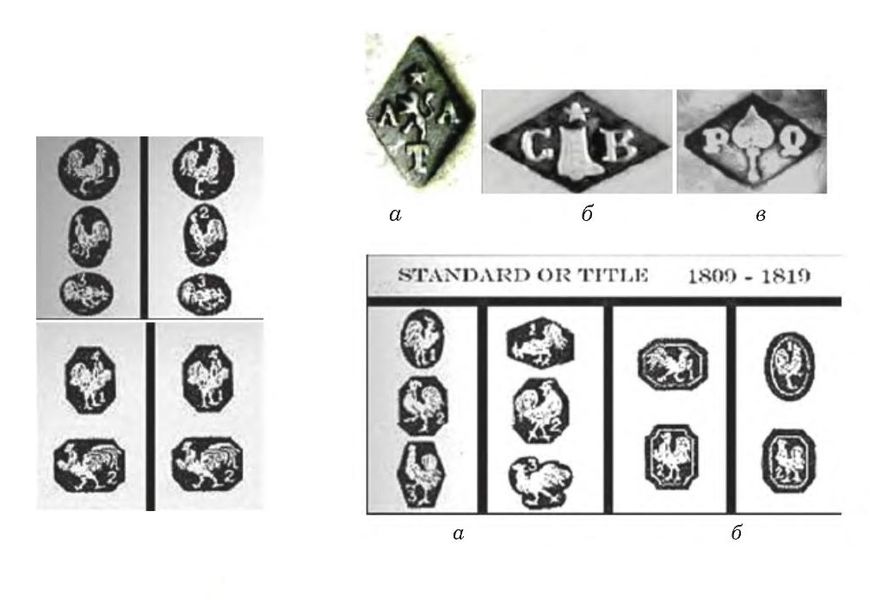
Branding became mandatory in 1672. The marking has not changed dramatically since then. Products from France are marked as follows:
- First there is an imprint of the head of Hermes, a sign that the ornament passed the state authenticity check;
- The letter designation encrypts the date of manufacture;
- The sample is indicated last;
German
The first German jewelry stamps date back to 1289. Branding was not compulsory in the country, but famous masters often indicated their authorship on the works.
It became obligatory in 1548, the new decree prescribed the marking on all items of purity above 4 lots. The imprint contained the lot value, a unique stamp of the master, a mark-certificate of the reigning monarch.
By 1800, the "Celtic mark" was established as a particularly popular mark. It was equal to 800th of a lunar metal sample.
In modern Germany, 800 silver remains in great demand, and the stigma is as follows:
- A unique mark of a factory or craftsman;
- The numerical value of the sample;
- The state confirmation mark is a crescent with a crown;
Cost per gram of 800 proof silver
The value of any alloy depends on the price of pure precious metal set by the Central Bank of the Russian Federation. To find out how much a particular silver assay is worth, you need to multiply the current price of the highest alloy by the required coefficient.
The price of pure silver in 2021 is about 58 rubles per gram.
Then you can calculate the current value of the 800 sample as follows:
58 * 0.8 = 46.4 rubles per gram.
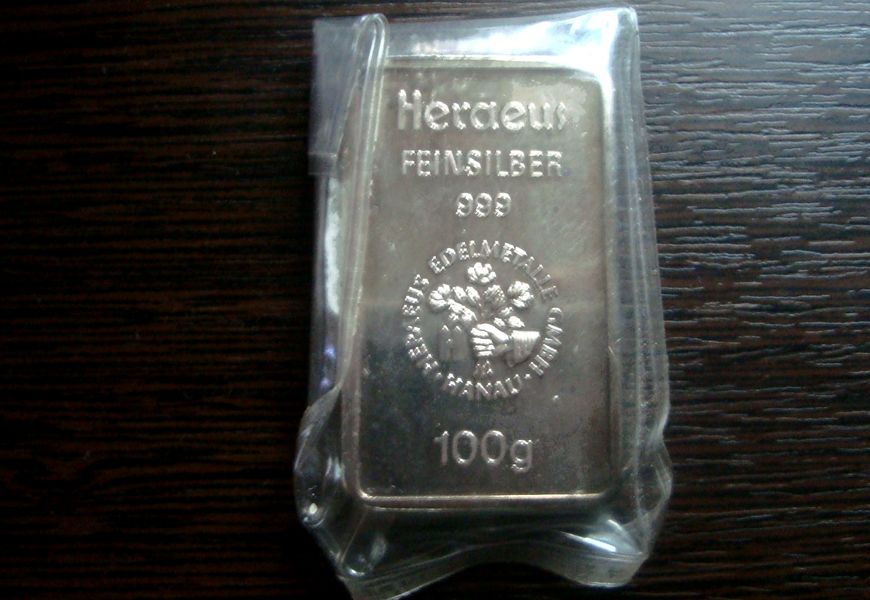
Ways to spot a fake
To reliably distinguish between counterfeit and genuine precious metal can be in jewelry shops, pawnshops, and pawnshops. If there is no possibility of going to professionals, you should use the following recommendations:
- First of all, it is necessary to carefully inspect the sample on the product. Lack of markings can indicate a fake.
- Try dripping iodine on an inconspicuous part of the object. Genuine precious metal will darken from contact with the substance.
- A new item should have no scuffs, scratches or other flaws. This appearance is only acceptable for antique items.
- You can try gently scratching the surface with a needle. If the scratched surface shows a different color of metal, you are faced with a fake.
GOST silver assay
GOST 30649-99 establishes 6 silver samples. You can read about their composition in the table below.
| Sample | Silver content | Impurity content |
|---|---|---|
| 800 | 80% | 20% |
| 830 | 83% | 16% |
| 875 | 87,5% | 12,5% |
| 925 | 92,5% | 7,5% |
| 960 | 96% | 4% |
| 999 | 99,9% | 0,1% |
Causes of blackening of silver
The most common cause of blackening is oxidation of the copper in the alloy. Human sweat, a "waste product" of the body, contains sulfur, which can also cause blackening of the lunar metal.
Low-grade materials also darken from contact with cosmetics, water, household chemicals, aggressive reagents.
Alloy cutlery 800 usually has an additional protective coating, so it does not darken from contact with food and water.
Ways to bring back the shine: cleaning and protective coating methods
There are several simple ways to clean low-grade material.
- Pour a liter of running water in a container, add 2-3 tablespoons of ammonia. Place contaminated objects inside the container for 20 minutes. Then the objects should be removed, rinsed with cold water, wiped dry.
- The second method requires diluting 3 spoons of salt and 2 spoons of baking soda in a liter of water. The objects are placed inside the container for 10 minutes.
Both methods are suitable for regular cleaning.
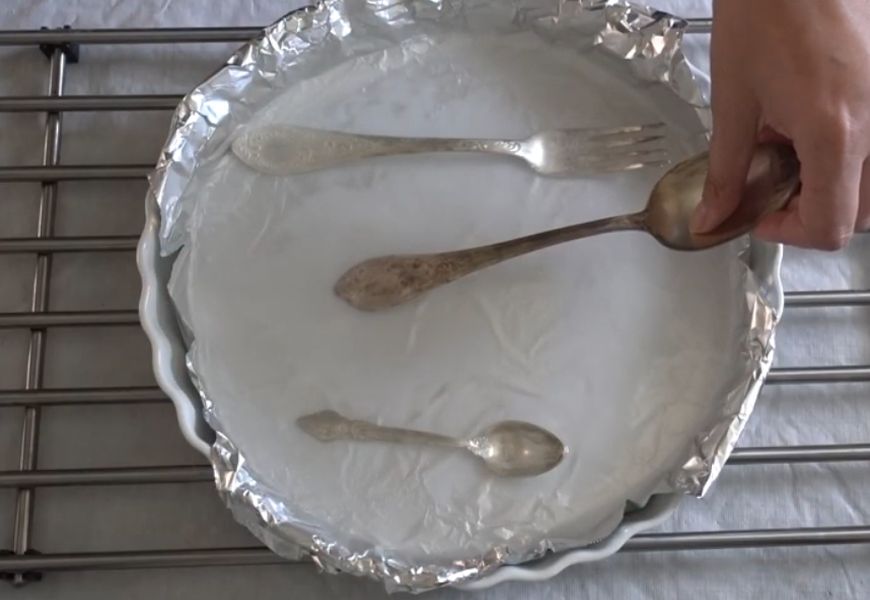
Recommendations for the care and storage of silverware
Silverware should be stored separately from other items, preferably inside special boxes or cases.
It is recommended to buy a detergent suitable for silverware. Wash the dishes immediately after eating, and do not allow the food to dry on the surface. Tableware should be washed separately, so as not to accidentally scratch other dishes.
It is recommended that items be cleaned regularly with soapy or baking soda solutions.
Do not wash products made of low-grade metal in the dishwasher.
Video: sterling silver cutlery 800
Reviews
For several years the whole family has been using "Sokolov" silverware, which corresponds to 800 proof. We only take it out for holidays and try to take care of it. The silverware looks as attractive as it did the day we bought it.


As a gift from Italy we brought silver spoons for the baby. On the handles of the spoons I saw the number 800 and a five-pointed star. It turned out that the picture means the country of manufacture, and the number means the silver grade. I liked the gift very much.
I found someone's forgotten set of silver straws in a recently purchased house. Apparently, the items belong to the times of the USSR, I understood it by the stamp 800 next to the head of the worker. The set is clearly of historical value, so I kept it as a memento.

Jeweler's comment

